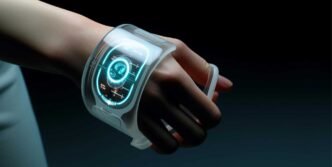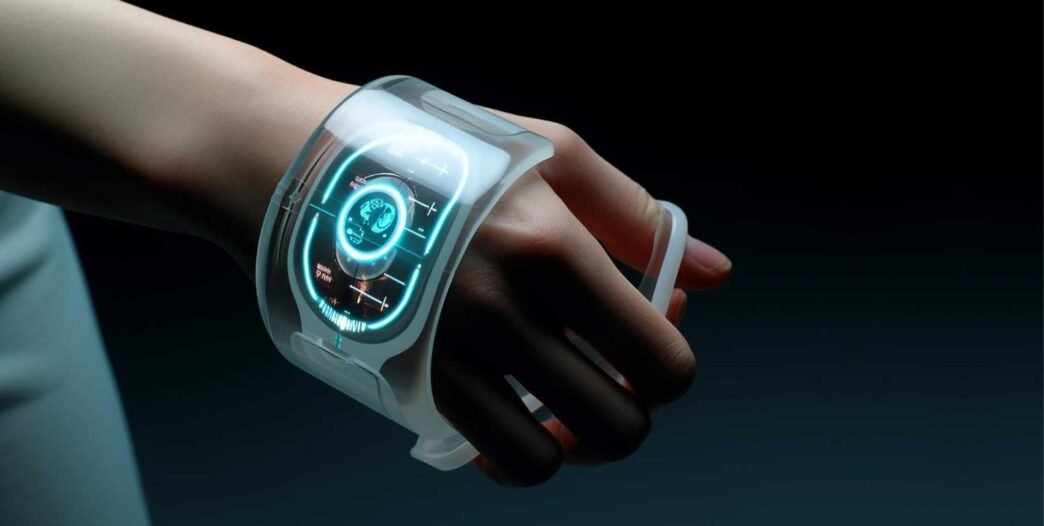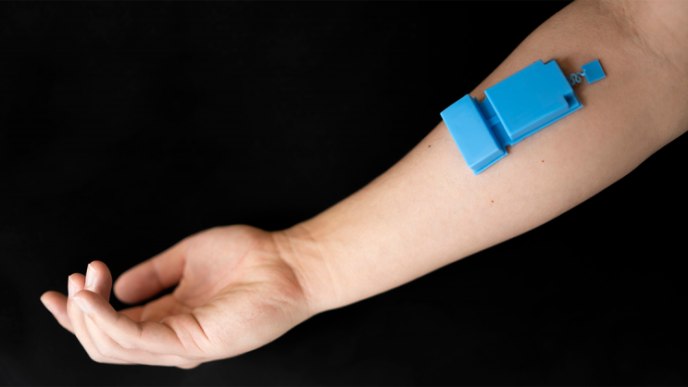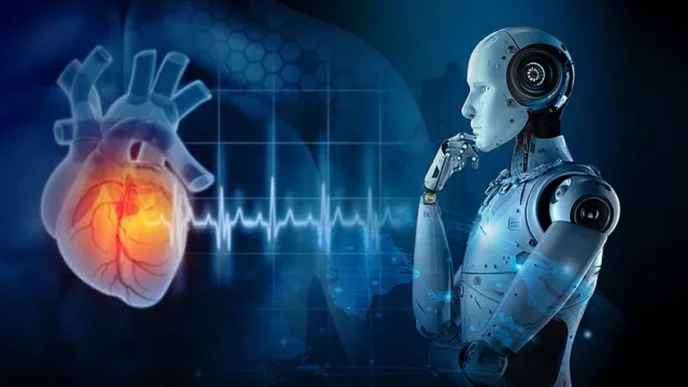Human beings today face an unprecedented range of health challenges, exacerbated by the stress of modern life, lifestyle choices, unhealthy food habits, and worsening environmental conditions. As a result, chronic health issues like kidney, liver, and pancreas failure, cardiovascular diseases, fluctuating blood pressure, and diabetes are becoming increasingly prevalent. To combat these issues, traditional health monitoring has relied on two main approaches: physical methods (monitoring pressure, flow rate, temperature, and organ imaging) and chemical approaches (analyzing glucose levels, creatinine, bilirubin, urea, WBCs, RBCs, and hemoglobin content). While these lab-based methods provide critical insights into the quality of human health, they are limited by their accessibility, turnaround time, and practicality in real-time monitoring.
However, with the advancement of technology, particularly the Internet of Things (IoT) and Artificial Intelligence (AI), a new paradigm has emerged in healthcare: Internet of Medical Things (IoMT). This innovative field holds immense potential to revolutionize healthcare by making health monitoring more precise, real-time, and accessible. The combination of AI-driven wearables and IoMT technologies is already transforming patient care, offering new possibilities for life-saving interventions and personalized treatment plans. In the coming years, this technology promises to make healthcare more proactive and preventive, dramatically improving the quality of life.
Understanding IoMT: The Next Frontier in Healthcare
The Internet of Medical Things (IoMT) is an interconnected system of devices, sensors, and applications specifically designed for healthcare. These devices collect data from patients in real-time, analyze it, and share it with healthcare providers, allowing for timely and personalized care.
Imagine a future where your smartwatch not only tracks your steps but can also continuously monitor your heart rate, blood pressure, and glucose levels. It could detect anomalies and alert you and your doctor in real-time, preventing critical conditions such as heart attacks or strokes. That’s the power of IoMT.
Key Components of IoMT:
•Wearable Devices: Smartwatches, fitness bands, and medical-grade wearables that monitor various health metrics (e.g., heart rate, oxygen saturation, sleep patterns).
•Sensors: Embedded sensors in wearable devices or even implantable sensors inside the body to monitor vital signs and chronic conditions.
•Health Apps: Mobile applications that store, analyze, and communicate health data, offering personalized insights and recommendations.
•Connected Medical Equipment: Devices like glucose monitors, ECG machines, or blood pressure monitors that are connected to the cloud and provide instant readings to both patients and doctors.
AI-Powered Wearables: From Fitness Trackers to Life-Saving Devices
Artificial Intelligence (AI) plays a pivotal role in enhancing IoMT, turning simple wearable devices into powerful health monitoring tools. AI algorithms can process the massive amounts of data generated by IoMT devices, extracting meaningful insights that go beyond raw numbers.
1. Continuous Health Monitoring
One of the most significant breakthroughs in IoMT is continuous health monitoring. Traditional medical check-ups are periodic, meaning critical health changes could be missed between appointments. However, AI-driven wearables allow for continuous monitoring, alerting users and healthcare providers when specific thresholds are crossed.
For example, an AI-powered wearable could detect an irregular heartbeat, a sudden drop in oxygen levels, or an unusual spike in glucose. These wearables aren’t just for patients with chronic illnesses either—healthy individuals could use them to detect conditions like hypertension or atrial fibrillation before they cause damage.
2. Early Detection of Chronic Diseases
Chronic conditions like diabetes, hypertension, and cardiovascular disease often develop silently over time. IoMT devices can track subtle health changes and notify patients to take preventive measures. AI algorithms can analyze patterns in the data, identifying risk factors for chronic diseases long before symptoms become apparent.
For instance, an AI-based algorithm could detect a gradual increase in blood sugar levels over weeks or months, enabling early intervention before full-blown diabetes develops. By combining long-term monitoring with AI’s predictive capabilities, we can move from reactive healthcare to proactive, preventive medicine.
3. Real-Time Emergency Alerts
AI in IoMT has the potential to save lives by sending real-time emergency alerts when critical conditions are detected. Consider a situation where a patient experiences a sudden drop in blood pressure, indicative of a heart attack. An AI-enabled wearable can immediately alert emergency services, providing crucial data like the patient’s location, vital signs, and medical history. This real-time response capability could dramatically improve the chances of survival.
Revolutionizing Healthcare with AI and IoMT: The Practical Applications
The practical applications of AI and IoMT in healthcare are expanding rapidly, with groundbreaking technologies already making a difference. Here are some of the most promising applications that are transforming lives:
1. Smart Glucose Monitors for Diabetic Patients
Traditional glucose monitoring requires frequent finger-pricking, which can be cumbersome and painful. However, AI-powered glucose monitors, like continuous glucose monitoring (CGM) systems, track blood sugar levels throughout the day without invasive procedures. These devices not only measure glucose but use AI to predict future spikes or drops based on real-time data, enabling better insulin management for diabetic patients.
2. Wearable ECG Monitors
Wearable electrocardiogram (ECG) monitors are now compact enough to be worn as a wristband or chest patch. These devices track heart rhythms, allowing patients with cardiovascular disease to detect arrhythmias, atrial fibrillation, or early signs of a heart attack. When coupled with AI, the data from these devices can be analyzed to predict potential cardiac events before they become life-threatening.
3. AI-Enabled Smartwatches for Blood Pressure Management
Smartwatches are evolving beyond simple fitness trackers. Modern AI-powered smartwatches can monitor blood pressure in real-time, providing continuous updates and alerts when readings fall outside healthy ranges. This is especially useful for hypertensive patients, who need to keep their blood pressure within a controlled range to prevent strokes or heart attacks.
The Future of IoMT: What’s on the Horizon?
As IoMT and AI technologies advance, the future holds limitless possibilities for healthcare. Here’s what we can expect in the coming years:
1. Personalized Health Dashboards
Imagine having a personalized health dashboard on your phone that tracks your vitals, predicts potential health risks, and suggests lifestyle changes tailored to your unique profile. AI-driven analytics will be able to offer precise recommendations based on your medical history, genetics, and real-time health data, empowering individuals to take control of their health.
2. AI-Based Predictive Healthcare
AI will enable predictive healthcare on an entirely new level. By analyzing a vast amount of patient data, AI will identify patterns and risk factors that could lead to future health problems. This means that doctors will be able to predict who is likely to develop certain diseases and intervene before symptoms appear. Early detection of conditions like cancer, Alzheimer’s, and heart disease will become the norm, allowing for earlier and more effective treatment.
3. Wearables That Are Truly Life-Saving
Future wearables will be capable of detecting health emergencies before they happen. Imagine a wearable that predicts a heart attack based on subtle changes in your body’s data hours before you feel any symptoms. Emergency services could be dispatched even before the patient is aware of the impending crisis. This kind of predictive healthcare could save thousands of lives.
4. Full Integration with Telemedicine
The rise of telemedicine has already transformed healthcare access, but the integration of AI and IoMT will take it even further. Patients will be able to share real-time health data with their doctors during virtual appointments, allowing for more accurate diagnoses and treatment plans. This will make healthcare more accessible to people in remote areas, ensuring that everyone can receive quality care.
Conclusion: A New Era of Healthcare
AI and IoMT are ushering in a new era of healthcare, where real-time monitoring, early detection, and personalized treatment are becoming the norm. These technologies not only make it easier to manage chronic diseases but also save lives by enabling rapid responses to emergencies and improving preventive care. As AI-powered wearables become more advanced and accessible, they are set to become life-savers, making healthcare more efficient, proactive, and tailored to individual needs.
The future of healthcare is already here, and it’s smarter, faster, and more connected than ever before.
Further Reading & Resources:
1.IoMT Explained: What It Is and Why It Matters
2.Wearable Technology in Healthcare: Past, Present, and Future
3.AI in Healthcare: The Key to Personalized Medicine
This is just the beginning of how IoMT and AI are transforming healthcare. With further advancements, we can expect healthcare to become even more accessible, preventive, and life-saving.











